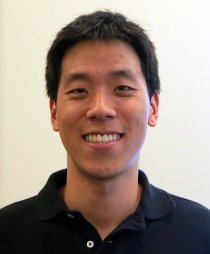Dongjin (DJ) Seo
Dongjin (DJ) Seo, Ph.D. is the Cofounder, President, and COO of Neuralink, leading the charge in developing high-bandwidth brain-machine interfaces.
DJ was instrumental in the early research of neural dust, tiny electronic sensors designed to interface with the brain. His work is at the forefront of merging human cognition with technology, leading the way for advancements in treating neurological conditions and expanding human potential.
He was one of nine cofounders of Neuralink, founded in 2016 with Elon Musk, and was first publicly reported in March 2017. The trademark “Neuralink” was purchased from its previous owners in January 2017. DJ became the only remaining founder as everyone else left the company. Their main goal is to make devices to treat serious brain diseases in the short term, with the eventual goal of human enhancement and transhumanism.
DJ is head of a team of a dozen people designing low-power wireless computers that fit into a small burr hole that’s cut into the skull. He says his primary contribution is designing the necessary circuit boards and chips. “We need these chips to collect a signal that may look like noise, process it, and do all that without cooking your brain.”
DJ’s seminal thesis research on Neural Dust was pivotal for wireless power and data telemetry. He proposed an entirely new method of wireless power and data telemetry using ultrasound, which can address fundamental issues associated with using EM to interrogate miniaturized implants. Watch Neural Dust explained | Neuralink – DJ Seo and Lex Fridman Read Neural Dust: Ultrasonic Biological Interface.
DJ also appeared as a major presenter when Elon Musk announced the progress of Neuralink in November 2022. Watch Neuralink Show and Tell, Fall 2022. Read Elon Musk expects Neuralink’s brain chip to begin human trials in 6 months.
He recently shared a powerful essay on Neuralink’s long-term vision: Understand and Expand Consciousness — a mission that could redefine what it means to be human. He explores how science and engineering can now tackle the once purely philosophical mystery of consciousness.
DJ was also selected as one of the 35 Most Innovative People Under 35 by MIT Technology Review in 2020.
DJ earned his B.S. degree in electrical engineering with honors from the California Institute of Technology, Pasadena, in 2011. He designed on-chip THz imaging systems in CMOS and was a Caltech’s Best Undergraduate Thesis Finalist. He earned his Ph.D. in Electrical Engineering from UC Berkeley in 2016 with his thesis Neural Dust: Ultrasonic Biological Interface under the guidance of Professor Elad Alon and Professor Michel Maharbiz.
His intellectual focus at that time was on the following projects:
-
Neural dust for chronic brain-machine interfaces: A major hurdle in brain-machine interfaces (BMI) is the lack of an implantable neural interface system that remains viable for a lifetime. DJ proposed the deployment of thousands of ultra-miniature, ultrasound-based neural recording motes (he calls them neural dust) in the brain to monitor neural signals in real time. This framework can potentially enable massive scaling in the number of neural recordings from the brain while providing a path toward truly chronic BMI. This work is in collaboration with Professor Jose Carmena and Professor Jan Rabaey.
-
eWallpaper for communication and imaging: The ever-increasing demand for computational power has necessitated multiple portable devices to be synched. In this project, DJ hopes to remove processing power from these devices and rather embed it within the environment. He hopes to integrate hundreds and thousands of CPUs and RF transceivers connected in 2D mesh networks within roll-to-roll wallpaper for communication and imaging applications. This work is in collaboration with Professor Ana Arias and Professor John Wawrzynek.
-
eBandaid to improve tissue growth and healing: By exploiting the native electrical field gradient that forms at the injury site, DJ intends to create miniaturized, interactive bandages to provide a high degree of direct and spatiotemporal control over the wound fields to accelerate the healing process. This project is in collaboration with Professor Shuvo Roy at UCSF.
Between 2011 and 2016, DJ was a National Science Foundation Graduate Research Fellow (NSF GRF) and a member of BWRC, SWARM, and BSAC. During this time, he was the inventor of Neural Dust, and has worked on other projects and publications in integrated ultrasonic imager and 60GHz phased-array.
Between 2012 and 2013, he was Analog Chip Designer for Altera, designing a 50+ Gb/s PAM4 wireline transceiver.
In 2014, DJ was designing low-power, high-performance SAR ADC mixed-signal chips for wireless sensor networks at Bosch North America.
Watch How Neuralink Works | DJ Seo and Lex Fridman. Watch New “Neural Dust” sensor could be implanted in the body.
Read Miniaturizing Ultrasonic System for Portable Health Care and Fitness and Wireless recording in the peripheral nervous system with ultrasonic neural dust.
Visit his LinkedIn profile, Google Scholar, IEEEXplore, and his ResearchGate page. Follow him on X and Crunchbase.
